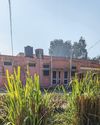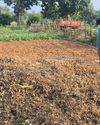
ON JUNE 20, residents of 18 villages in Chhattisgarh's Udanti Sitanadi Tiger Reserve blocked the busy National Highway 130C. "We need forest resources for survival. Being a tiger reserve, we already lead a life with many restrictions. There is no power supply, access to grazing lands is non-existent and we cannot undertake construction works," says Arjun Nayak of Nagesh, one of the 18 villages in Gariaband district.
The village residents were demanding rights over forest resources around their villages under Section 3(1)(i) of the Scheduled Tribes and Other Traditional Forest Dwellers (Recognition of Forest Rights) Act, 2006, referred to as the Forest Rights Act (FRA).
Under FRA, forest-dwelling communities are entitled to two types of rights: the individual right of settlement and cultivation on forestlands, and a wider set of rights, referred to as community forest rights (CFR), under which communities can manage, collect and sell minor forest produce like bamboo and tendu leaves. Provisions of Section 3(1)(i),referred to as the Community Forest Resource Rights (CFRR), are even broader in scope. They recognise not just forest communities' rights to access and use forest produce, but also their "rights to protect, regenerate or conserve or manage any community forest resource which they have been traditionally protecting and conserving for sustainable use" (see 'Spectrum of rights', p36).
Diese Geschichte stammt aus der August 16, 2022-Ausgabe von Down To Earth.
Starten Sie Ihre 7-tägige kostenlose Testversion von Magzter GOLD, um auf Tausende kuratierte Premium-Storys sowie über 8.000 Zeitschriften und Zeitungen zuzugreifen.
Bereits Abonnent ? Anmelden
Diese Geschichte stammt aus der August 16, 2022-Ausgabe von Down To Earth.
Starten Sie Ihre 7-tägige kostenlose Testversion von Magzter GOLD, um auf Tausende kuratierte Premium-Storys sowie über 8.000 Zeitschriften und Zeitungen zuzugreifen.
Bereits Abonnent? Anmelden

TERMITE TRAP
A common tall grass variety provides a chemical-free option to control termites, highlights the need for mainstreaming local ecological knowledge

CLIMATE'S UNSOLICITED PAYOUT
Rising weather extremes is destabilising the insurance industry, driving up premium prices and pushing insurers out of high-risk markets. The crisis is also spurring re-invention of insurance sector.

NOTHING PSEUDO ABOUT IT
The fibre-rich banana pseudo-stem is a treasure trove of minerals and health benefits

Organic move
After 10,000 farmers in Dantewada district secured Chhattisgarh's first organic certification, the entire district now gears up to transition fully to organic farming

No more a rarity
What has caused widespread outbreak of the rare Guillain-Barré syndrome cases from seven states of the country?

DeepSeek AI model is a sobering idea for India
The Chinese artificial intelligence breakthrough reveals how far behind India is in the race for technological prowess

'Fragile terrain not the cause of tunnel collapse but an excuse'
In November 2023, the under-construction Silkyara Bend-Barkot tunnel in Uttarakhand collapsed, trapping 41 workers under the rubble. The rescue operation in the 4.5 km tunnel lasted 17 days and involved multiple teams. Australian geologist ARNOLD DIX, who is also the president of Switzerland-based International Tunnelling and Underground Space Association, as well as an engineer, a barrister and a farmer, assisted in the mission at India's request. Dix has now written a book on the incident. In an interview with ADITYA MISRA, Dix says the mishap was a failure to adapt construction methods to the rock conditions encountered. Excerpts:

BUDGET SQUEEZE
Poised to woo the middle class and tame fiscal deficit, Union Budget 2025-26 cuts corners on key welfare schemes, offers little for climate adaptation and decarbonisation

Decoded script
Genomelndia project creates genomic sequence database of 10,000 Indians, moving a step forward in disease detection and treatment

Introduce layers in poverty measurement
This is with reference to the article \"Convenience of poverty lines\" (16-31 January, 2025). Poverty is not like atmospheric pressure, which can be scaled down with high-precision instruments. It is a matter of deprivation. Poverty is also highly misunderstood. At one extreme, poverty means no food, no clothes, bad health and inadequate shelters; in essence a dearth in common and customary amenities. One can recognise this poverty. But, even if a person's conditions are only a notch above this level, their situation slides through the slick fingers of all the measurement of figures and wielders of statistics.